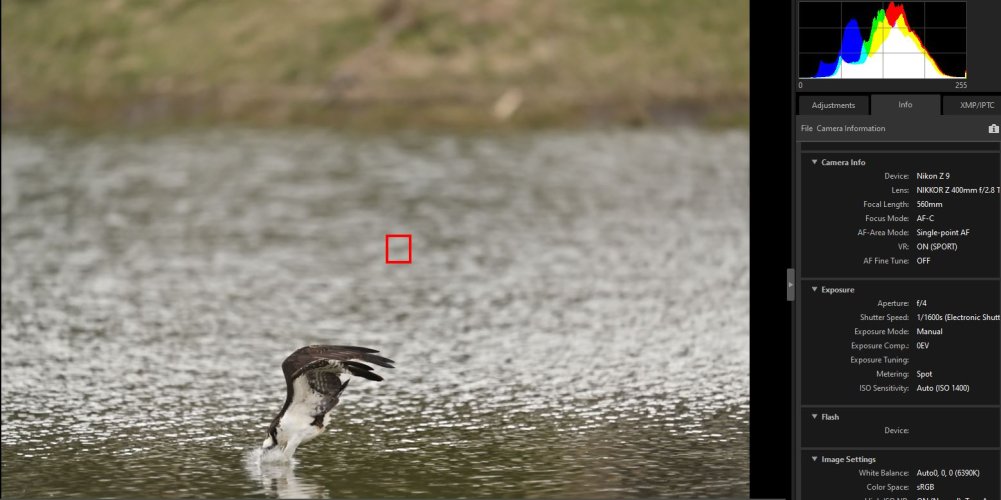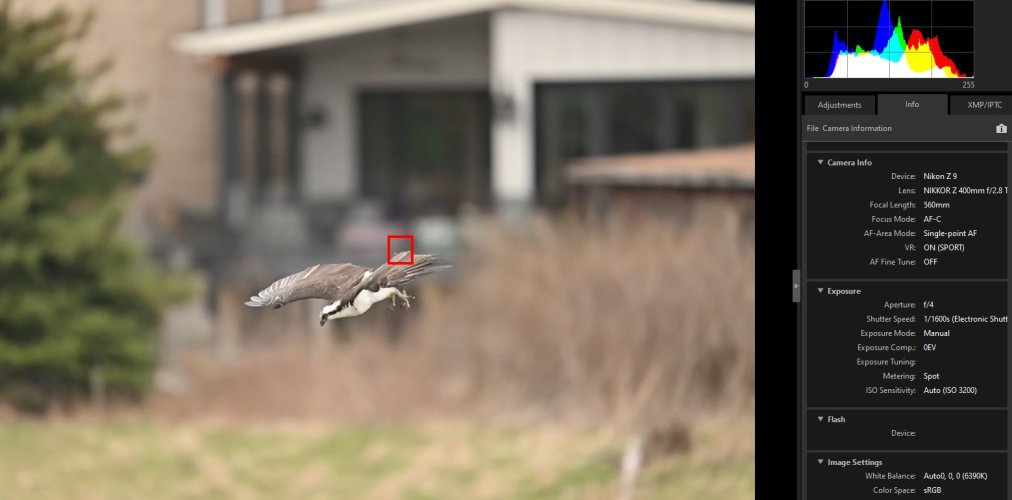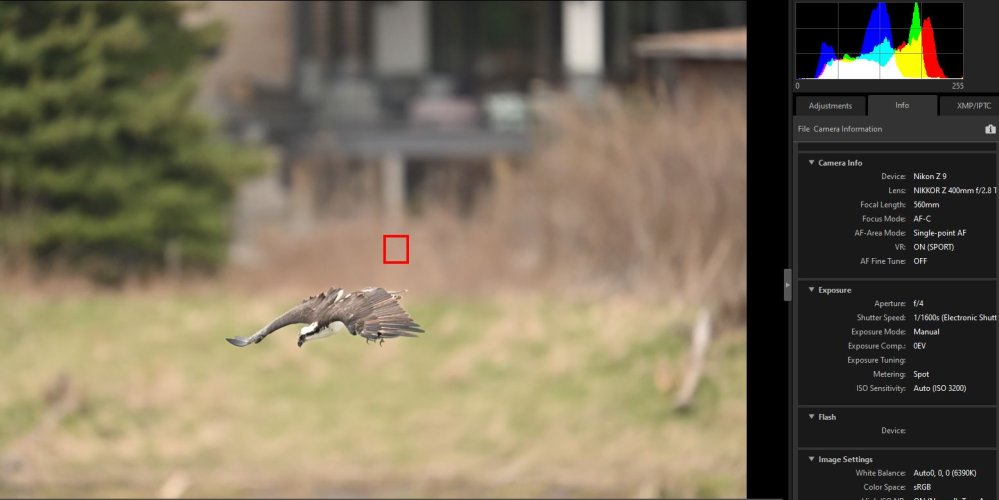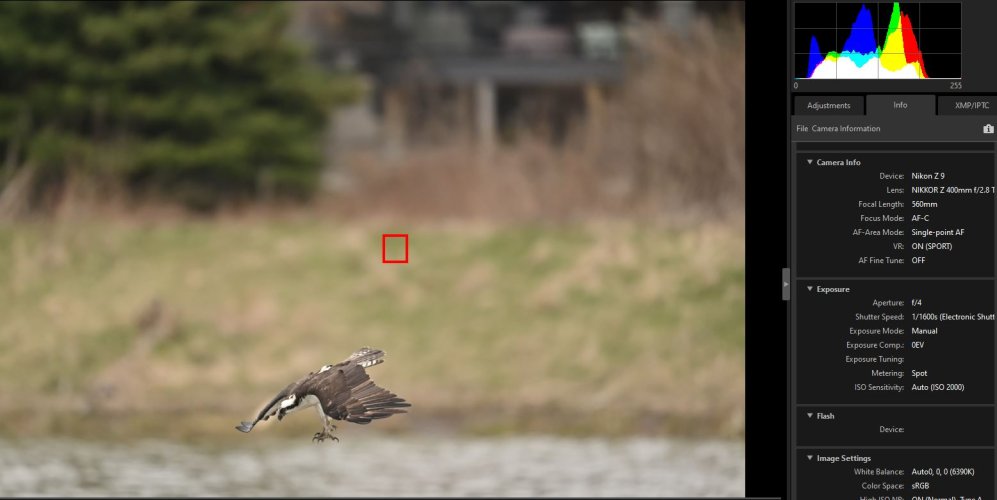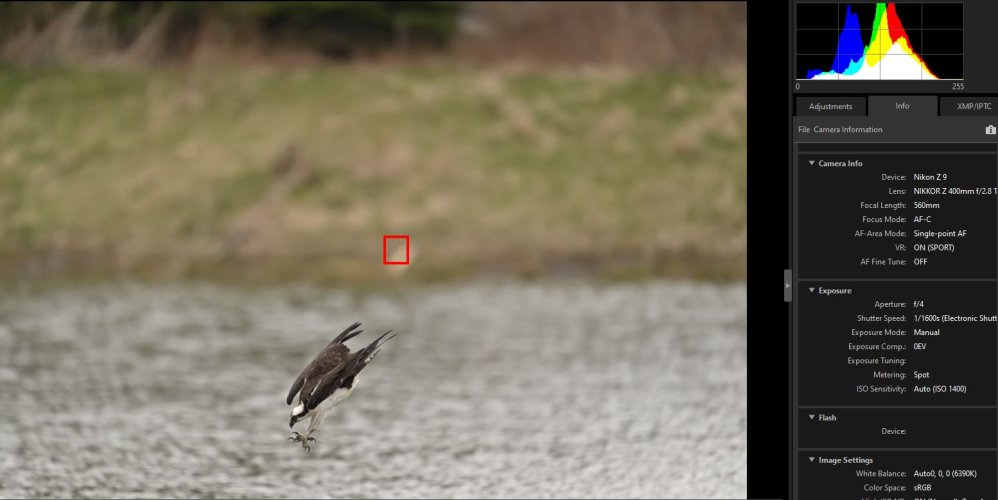Makes sense.
On BIF handholding, single point is impossible. Spoonbills, Ospreys, Eagles, etc.
Steve, the single point AF w/SD OFF for stationary or slow moving critters seems to be the solution here. However, Joel’s point is spot on, the single point is useless for BIF. The video button I reprogrammed for AF areas will let me quickly switch, based on needs….. Like this example from your recent post “knowing when birds are about to launch”…….


YUP, She launched! Twice…
View attachment 87313
Yeah, I was thinking more or less static shots (when this thread started out, it was more about reflections, not action - I'm not sure when it shifted

). Sticking with more or less static or slow movers, I think it's completely realistic to keep a single AF point or Wide Small area on the head - I do it all the time

And I agree, for flight shots, single point isn't as easy.
Shifting to action shots:
For situations where Subject Detection isn't working well for action, I use Wide Large or Wide Small and do my best to keep the AF area on the face area. Ideally, yes, I like to use Subject Detection for those scenarios, but there are times it just doesn't stick to the correct area (depends on the bird and the distance). In those cases, I turn it off and get a better keeper rate. I've had times where Subject Detection would constantly focus on the bird's body instead of the head, netting me a 100%
failure rate. Even if I don't do as well as Subject Detection when it's working, I still tend to get a better keeper rate than that

Still, for most birds I find Subject Detection works at least as well as I do for action, it really depends on the scene.
It comes down to what I say all the time: If Subject Detection is working well, stick with it - but don't hesitate to shut it off if it's not sticking to the subject the way you want.


